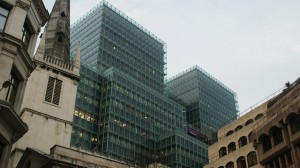Shatterproof glass worked in NYC
Following the 9/11 attacks, New York City required many buildings to retrofit with shatterproof glass. The benefits of the retrofit were evident last week when homemade bombs exploded in Manhattan’s Chelsea neighborhood. While the blasts did cause some limited damage, one thing that did not happen is that street-level glass didn’t shatter or break as the result of the explosions.
Shatterproof glass required after 9/11
Surveillance video of the area during the blast showed just what the city hoped – windows remained intact, instead of showering broken glass onto pedestrians in the street. Shatterproof glass contains a layer of plastic between two panes of glass. When the shatterproof glass panes break, they don’t shatter randomly, like ordinary glass. Instead, the broken glass remains bonded together – exactly what’s needed in situations like the one in Chelsea.
Shatterproof glass isn’t new; in fact, it’s more than 100 years old. The first patent for breakage-resistant glass was issued in 1909, although the glass itself was invented in 1902. The need for shatterproof glass became evident when manufacturers first started incorporate glass into automobiles. By the mid-1930’s, shatterproof glass was standard in automobiles.
Shatterproof glass may have been a required component of automobiles for more than 80 years, but it typically isn’t required in ordinary buildings. While the Uniform Building Code has required shatterproof glass in buildings since 1991, the requirements focused primarily on doors, glass panels in and near doors, and glass in safety situations. Very large windows, windows in close proximity to a walking surface, and glass in wet areas like bathrooms, may also be made of shatterproof glass. The NYC requirements focused on windows, regardless of their proximity to doors, walking paths or even size.
Tempered glass is a form of safety glass, but it’s far from shatterproof. In fact, tempered glass is known to shatter in a rather explosive way. The benefit of tempered glass in a breakage situation is that like shatterproof glass, it doesn’t break randomly. Tempered glass, which is heat-treated and specially cooled at the time of manufacture, breaks into uniform pieces that won’t create significant injuries, even if the pieces become airborne.
Shatterproof glass looks like ordinary glass, and it can be decorated, painted or printed like ordinary glass. Glassprimer™ glass paint will create a permanent bond with tempered glass, thanks to its specially engineered nature. In addition to resisting chipping, peeling and fading, it also offers superior UV resistance.
If you’d like more information about Glassprimer™ glass paint, please visit the rest of our site. If you’d like to purchase Glassprimer™ glass paint, please visit our online store .
Photo Credit: Will Taylor, via Flickr.com


